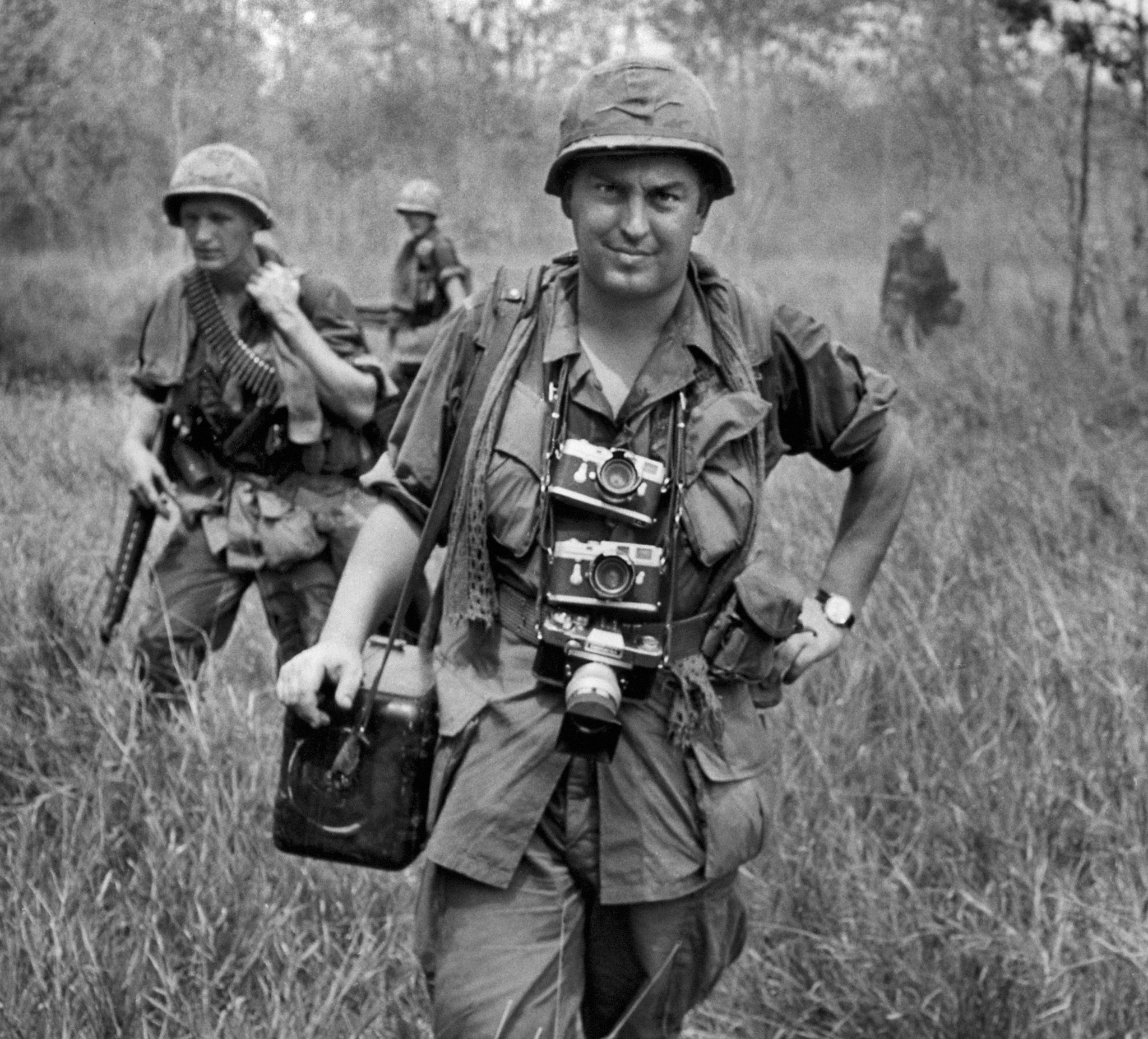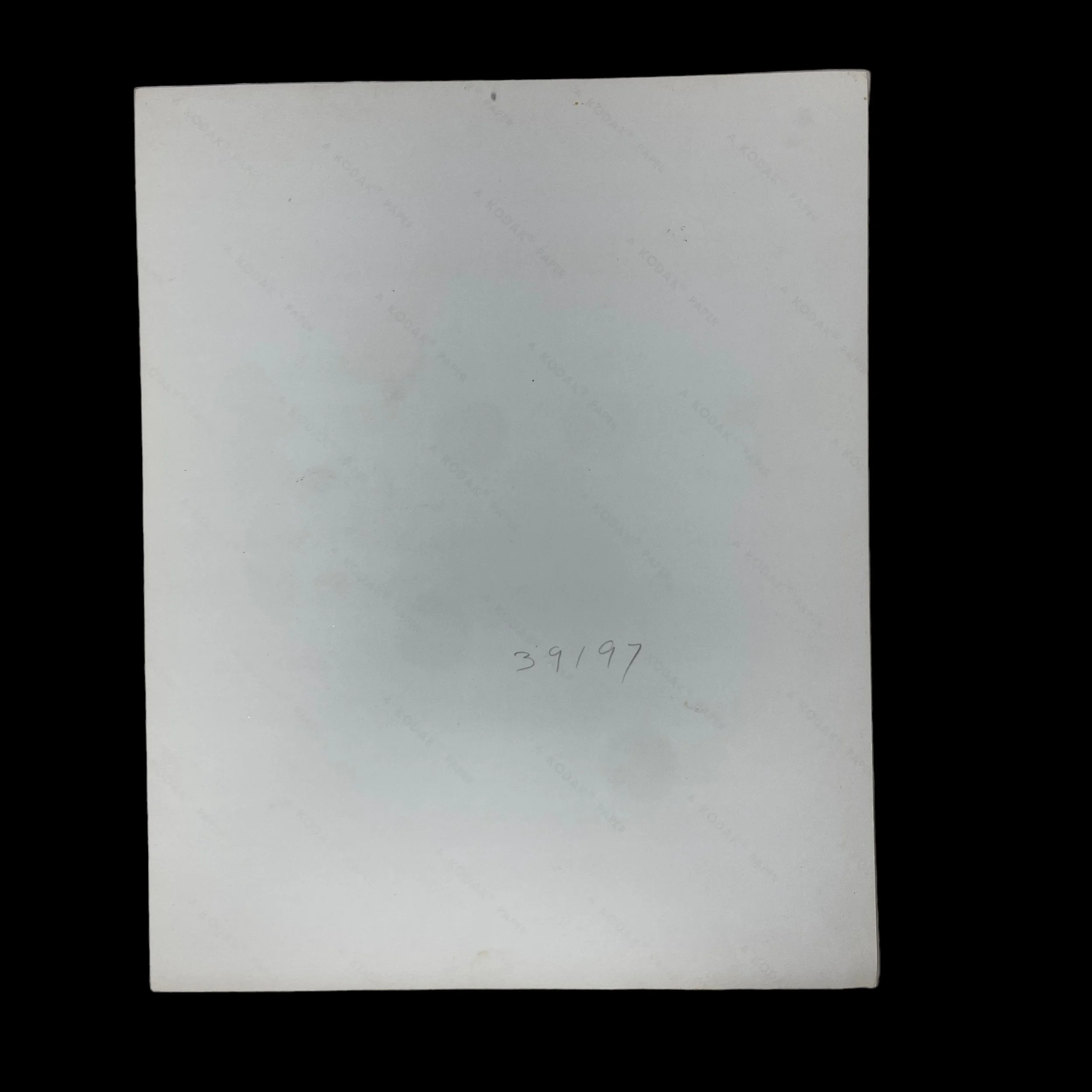VERY RARE! Unknown Soldier "Lead on Patrol" TYPE ONE Original U.S. Army's Photograph Signal Corps Combat Photograph*













VERY RARE! Unknown Soldier "Lead on Patrol" TYPE ONE Original U.S. Army's Photograph Signal Corps Combat Photograph*
Comes with a hand-signed C.O.A.
Size: 8 x 10 inches
This original and museum-grade Vietnam War is an extremely rare TYPE ONE (U.S. Army's Photograph Signal Corps) combat photograph take of an unknown soldier taking lead during a patrol.
One of the primary functions of the Photograph Signal Corps during the Vietnam War was to document combat operations. Embedded with military units across Vietnam, photographers captured intense firefights, helicopter assaults, and the daily struggles of soldiers in the field. These images provided a visceral depiction of the war's brutality and the challenges faced by American troops fighting in unfamiliar terrain against a determined enemy. Beyond documenting combat, the Photograph Signal Corps also sought to humanize the soldiers serving in Vietnam. Through candid portraits and slice-of-life photographs, photographers portrayed the camaraderie, resilience, and humanity of American troops amidst the chaos of war. These images served to counterbalance the dehumanizing effects of war and remind viewers of the individuals behind the uniforms.
Type One photographs are very rare as they are the first high-gloss prints from original combat negative camera images. Original government/U.S. Army Vietnam War combat photographs are very rare and rarely come to the public sector.
Being a leader on a patrol during the Vietnam War was a perilous position, fraught with numerous dangers that could lead to injury, capture, or death. The Vietnam War was characterized by guerrilla tactics, dense jungles, booby traps, and a determined enemy, all of which posed significant threats to patrol leaders. Here are some of the dangers they faced:
Ambushes: One of the greatest dangers for patrol leaders was the constant threat of ambush by Viet Cong (VC) or North Vietnamese Army (NVA) forces. These ambushes could occur suddenly and without warning, often in areas where the enemy had the advantage of cover and concealment. Patrol leaders had to be vigilant at all times, anticipating potential ambush sites and taking measures to minimize their vulnerability.
Booby Traps: The jungle terrain of Vietnam was riddled with booby traps, including punji pits, tripwires connected to explosives, and hidden mines. Patrol leaders had to carefully navigate through this hazardous environment, constantly scanning the ground for signs of enemy traps. Even the slightest misstep could trigger a deadly explosion or inflict severe injury.
Sniper Fire: The dense vegetation and urban environments of Vietnam provided ample opportunities for enemy snipers to conceal themselves and take aim at patrol leaders and their troops. Sniper fire could come from virtually anywhere, making it difficult for patrol leaders to identify and neutralize the threat. Sniper attacks often caused chaos and confusion among patrol units, leading to casualties and loss of morale.
Close Quarters Combat: Patrol leaders frequently found themselves engaged in intense close-quarters combat with enemy forces. These encounters could occur suddenly and escalate rapidly, requiring quick thinking and decisive action on the part of the patrol leader. Hand-to-hand combat, grenade exchanges, and small arms firefights were all common occurrences during patrols in Vietnam.
Improvised Explosive Devices (IEDs): The Viet Cong and NVA were adept at using improvised explosive devices (IEDs) to target US and South Vietnamese forces. These devices could be concealed along trails, in buildings, or buried underground, posing a constant threat to patrol leaders and their troops. Detecting and neutralizing IEDs required careful attention to detail and specialized training.
Environmental Hazards: In addition to enemy threats, patrol leaders also had to contend with the harsh and unforgiving environment of Vietnam. Extreme heat, monsoon rains, dense vegetation, and disease-carrying insects were just some of the environmental hazards they faced on a daily basis. These factors could exacerbate fatigue, impair judgment, and increase the risk of injury or illness.
Friendly Fire: In the chaos of combat, there was always the risk of being inadvertently targeted by friendly forces. Miscommunications, confusion, and the fog of war could lead to tragic incidents of friendly fire, resulting in casualties among patrol leaders and their troops. Maintaining clear lines of communication and proper identification procedures was essential to minimizing the risk of friendly fire incidents.
Overall, being a leader on a patrol during the Vietnam War required courage, resourcefulness, and a willingness to confront danger head-on. Despite the myriad risks they faced, patrol leaders remained steadfast in their commitment to their mission and their fellow soldiers, exemplifying the bravery and resilience of those who served in Vietnam.
Capturing History: The Role of the US Army's Photograph Signal Corps during the Vietnam War
The Vietnam War was one of the most tumultuous and divisive conflicts in American history, spanning from 1955 to 1975. Throughout this period, the United States Army's Photograph Signal Corps played a crucial role in documenting the war's events, providing a visual narrative that shaped public perception both at home and abroad.
Establishing the Photograph Signal Corps:
The US Army's Photograph Signal Corps traces its roots back to the Civil War when photographers such as Mathew Brady and Alexander Gardner documented the conflict's brutality and human toll. During World War II, the Signal Corps expanded its role to include motion pictures and aerial photography, recognizing the importance of visual media in warfare. By the time the Vietnam War began, the Photograph Signal Corps was a well-established unit equipped with advanced cameras, film processing facilities, and skilled photographers.
Documenting Combat:
One of the primary functions of the Photograph Signal Corps during the Vietnam War was to document combat operations. Embedded with military units across Vietnam, photographers captured intense firefights, helicopter assaults, and the daily struggles of soldiers in the field. These images provided a visceral depiction of the war's brutality and the challenges faced by American troops fighting in unfamiliar terrain against a determined enemy.
Among the most iconic images of the war are those captured by Photograph Signal Corps photographers. Larry Burrows' haunting photograph of wounded Marines during the Battle of Hill 484 and Eddie Adams' shocking image of a South Vietnamese police chief executing a Viet Cong suspect are just a few examples of the powerful imagery that emerged from the conflict. These photographs not only brought the reality of war into the living rooms of American households but also influenced public opinion and policy decisions regarding US involvement in Vietnam.
Humanizing the Soldier:
Beyond documenting combat, the Photograph Signal Corps also sought to humanize the soldiers serving in Vietnam. Through candid portraits and slice-of-life photographs, photographers portrayed the camaraderie, resilience, and humanity of American troops amidst the chaos of war. These images served to counterbalance the dehumanizing effects of war and remind viewers of the individuals behind the uniforms.
Moreover, the Photograph Signal Corps captured the diverse experiences of soldiers serving in Vietnam. From the boredom of base camp life to the moments of camaraderie shared during downtime, these photographs offered a more nuanced understanding of the soldier's experience. By showcasing the humanity of those serving in Vietnam, the Photograph Signal Corps played a vital role in bridging the gap between the military and civilian populations.
Documenting the Impact on Civilians:
In addition to documenting the experiences of American troops, the Photograph Signal Corps also captured the impact of the war on Vietnamese civilians. Photographers documented the devastation caused by bombing raids, the displacement of civilians due to the conflict, and the daily struggles of ordinary Vietnamese caught in the crossfire. These images provided a stark contrast to the narrative of liberation and democracy promoted by US officials, highlighting the human cost of war for the Vietnamese people.
One of the most notable examples of this documentation is Nick Ut's Pulitzer Prize-winning photograph of Kim Phuc, a young Vietnamese girl running naked and screaming from a napalm attack. This image, which captured the horrors of war and the innocence of its victims, became a symbol of the human toll of the Vietnam War and helped galvanize anti-war sentiment around the world.
Legacy and Conclusion:
The US Army's Photograph Signal Corps played a vital role in shaping the public's understanding of the Vietnam War. Through their powerful imagery, photographers captured the realities of combat, humanized the soldiers serving in Vietnam, and documented the impact of the war on Vietnamese civilians. Despite the challenges and dangers they faced, these photographers remained committed to their mission of documenting history and ensuring that the sacrifices made during the Vietnam War would not be forgotten. Today, their photographs serve as a lasting reminder of the human cost of war and the importance of bearing witness to history.